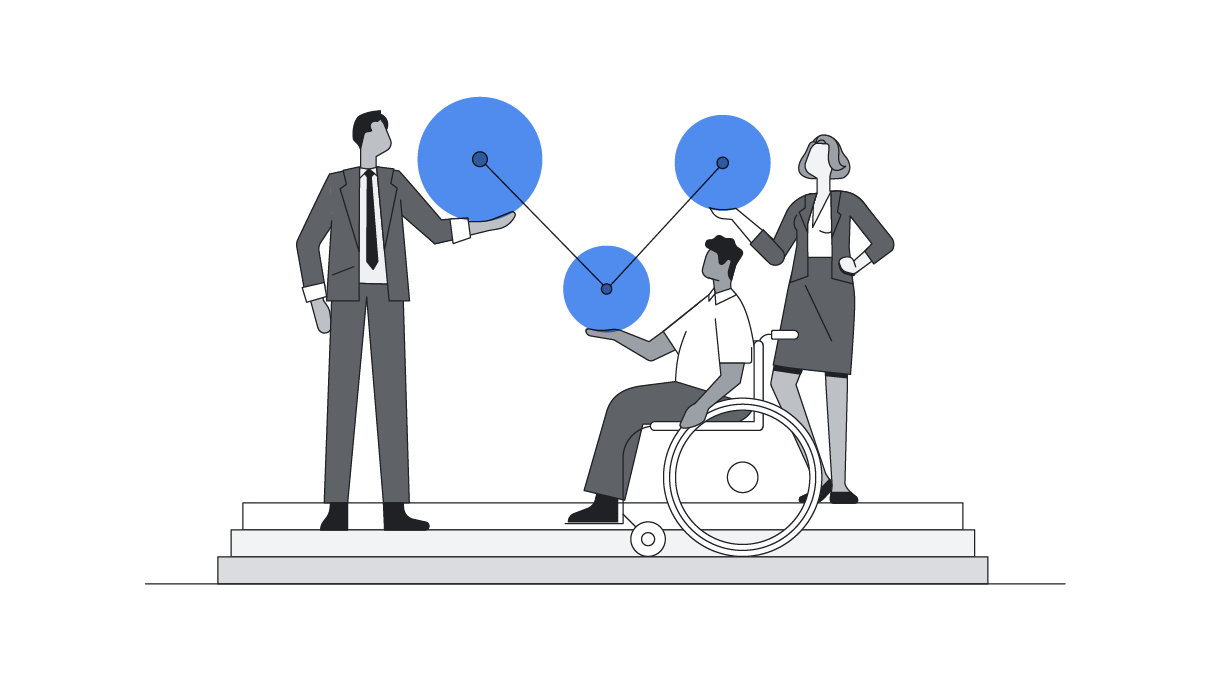The global impact of the coronavirus is driving consumers to be more online, as millions of people look for entertainment, turn kitchens into home offices, or order their weekly shop online rather than go to a physical store. With this sudden change in behaviour, consumer needs are evolving as people start to adapt to this new situation.
The challenge for brands is to figure out how to stay ahead of this new reality, give customers what they need, and be well prepared for eventual recovery.
The value of a connected data-driven strategy
One approach is to start making (better) use of the data you already have access to: your first party data. This is the information that you get directly from customers — through CRM, website analytics, sales, and more — which should always be used in a privacy-safe and responsible way in line with local regulations.
This kind of data is particularly useful to marketers, because it’s unique to your business and gives you clear insights into your customers and the types of products or services they ultimately want. Leveraging this data also helps you build better online experiences — providing value for your customers — and resulting in more conversions and a higher return on investment.
Even before the coronavirus crisis, having a connected data strategy was vital for best-in-class marketers to help drive revenue and cost savings. As we move forward, the role of responsible first party data use is becoming even more important.
1. Understand your audience — and how their needs are changing
With people’s routines and brand preferences disrupted, you may see users starting to exhibit new behaviours, or even observe an influx of shoppers from demographic groups you’d not considered before. Analysing your first party data will give you a clearer understanding of precisely what’s happening here.
Your data can also help you learn more about customer lifetime value, and identify which customers are most at risk of churning.
Tools like Google Analytics can be helpful here, and are used by many businesses — including Orange Poland, which last year unlocked the potential within its own data to increase new leads by 86%, and cut acquisition costs by a third.
Audience Insights is another way to understand information and detect emerging trends or opportunities. Over the years, it’s been used by the likes of Turkish game developer Lokum Games to gain a better understanding of their gamers, shape their campaigns, allowing them to increase conversions by 22%.
2. Reach and engage with your most valuable customers
During these times it's more important than ever to get the message right — and to deliver relevant and helpful messages to consumers at the appropriate point in the customer journey. Data-driven strategies can help marketers reach and craft their messages to the customers they most want to engage with, while minimising inefficient marketing spend. And for businesses, relevancy and cost-savings are more critical now than ever..
One tool that can help here is Customer Match, which Norwegian telco business Telia used in 2019 to deliver more personalised campaigns to its key audience segments, and achieve a conversion rate 22% higher than average.
There’s also Remarketing Audiences in Google Ads or Google Analytics. This allows marketers to use their offline or online first party data to reach and engage with potential customers across Search, Gmail, YouTube, and Display. Last summer, it helped Swedish fashion retailer Stayhard to reconnect with engaged viewers who had watched their videos, and increase site traffic by 55% year-on-year.
One specific and timely way these tools can help companies facing unexpected supply chain or logistical challenges, is by allowing them to optimise their ads to reach only a certain subset of customers or advertise only a certain category of products. For example, a retailer struggling to fulfill orders due to a lack of warehouse staff can use Customer Match to prioritise who sees their ads — in this case, their most loyal customers.
You can also use it in combination with Similar Audiences, which in 2018 helped Vodafone Turkey boost conversion rates by 44%, by connecting with new users who were similar to existing valuable customer segments or site visitors.
Retailers can also explore the Site Search functionality of Google Analytics to see whether customers are predominantly searching for information such as their delivery or returns policy. If so, the design of the site could be altered to make this content easier to find and more visible.
3. Use data and insights to create better user experiences
You can also use the data and insights you have about your customers’ changing behaviours to create better user experiences. For example, refining your site or app to improve navigation and reduce bounce rates on certain pages, or even adapting your creative to push this weeks’ most in-demand products.
One way you can approach this is by using Google Optimize. This is a free tool that lets you run tests on your website to better understand which content your customers prefer, so you can improve performance.
Focus on now, with an eye to the future
With the world turned on its head, it’s easy to overlook the role that data can play in helping many brands whose new focus is mere survival. But businesses who prioritise responsible first party data to understand these changing consumer behaviours will be better placed to create marketing strategies that help them in the short-term — and when we move into recovery mode.






